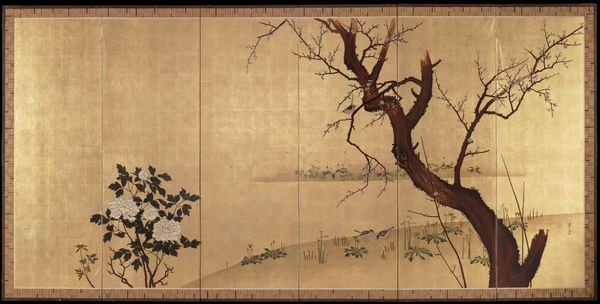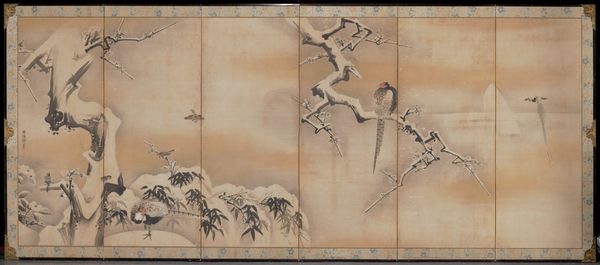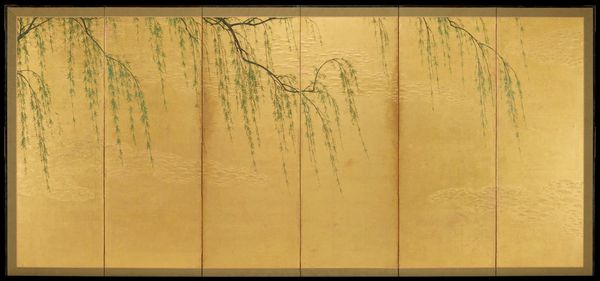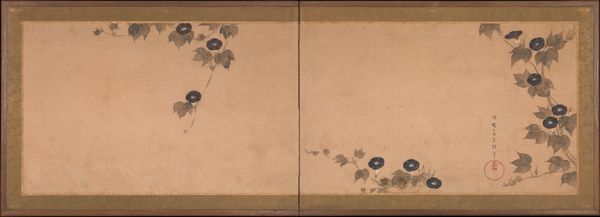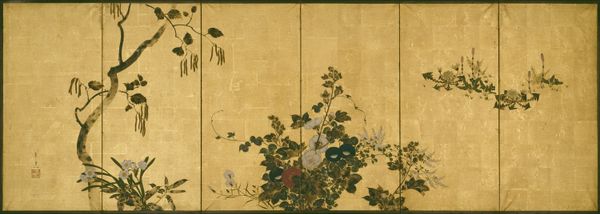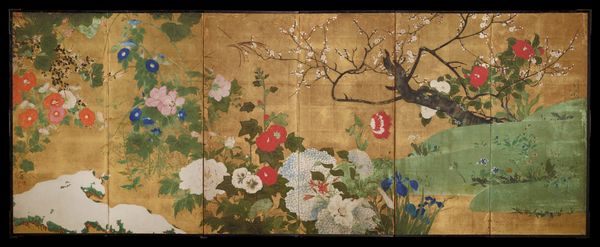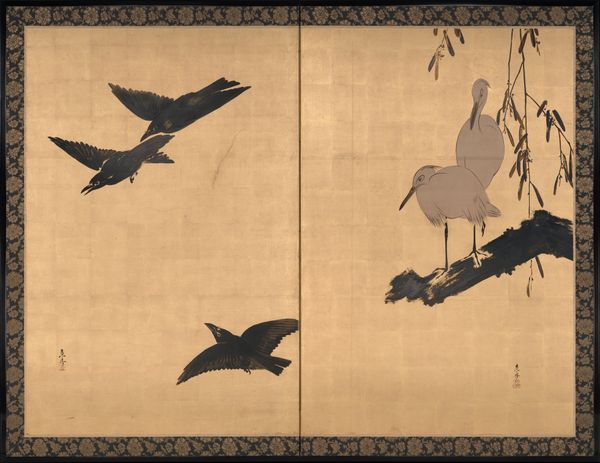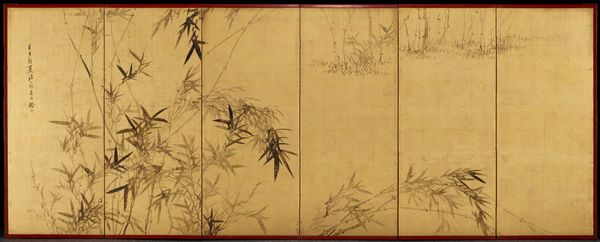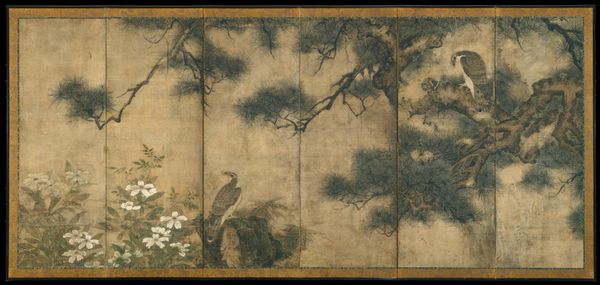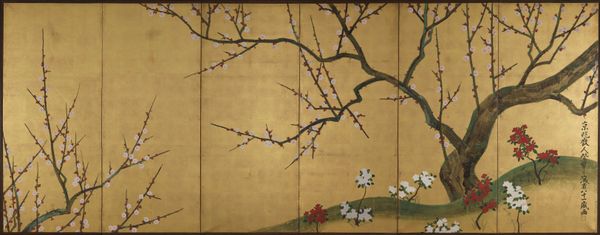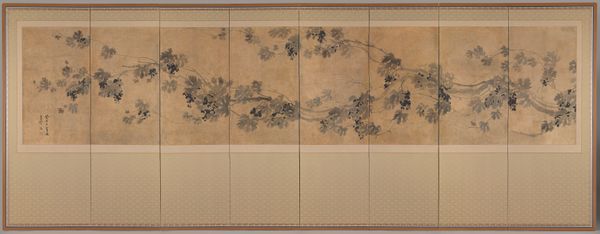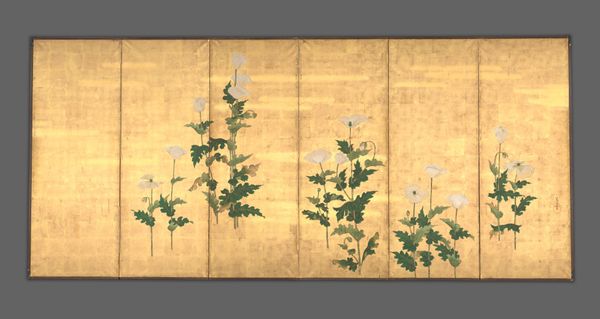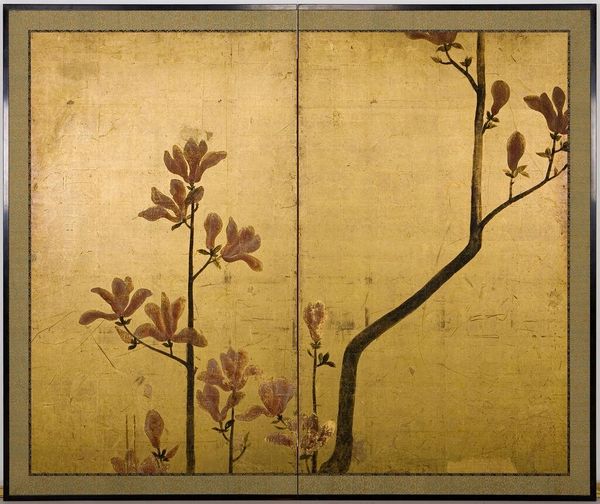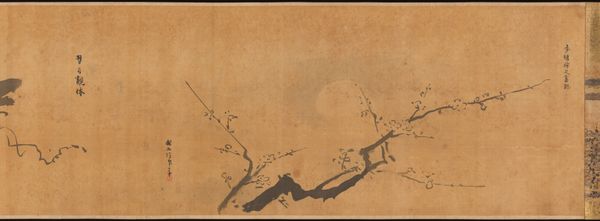![Autumn [left of a pair of Birds and Flowers in Spring and Autumn] by Shibata Zeshin](/_next/image?url=https%3A%2F%2Fd2w8kbdekdi1gv.cloudfront.net%2FeyJidWNrZXQiOiAiYXJ0ZXJhLWltYWdlcy1idWNrZXQiLCAia2V5IjogImFydHdvcmtzL2M3MzE3MjdkLTBhZTktNDk1MS04ZjRmLTNiNzdiNGI2ZWYzMS9jNzMxNzI3ZC0wYWU5LTQ5NTEtOGY0Zi0zYjc3YjRiNmVmMzFfZnVsbC5qcGciLCAiZWRpdHMiOiB7InJlc2l6ZSI6IHsid2lkdGgiOiAxOTIwLCAiaGVpZ2h0IjogMTkyMCwgImZpdCI6ICJpbnNpZGUifX19&w=3840&q=75)
Autumn [left of a pair of Birds and Flowers in Spring and Autumn] c. 19th century
0:00
0:00
painting, paper
#
water colours
#
painting
#
asian-art
#
landscape
#
paper
Dimensions: 69 x 23 in. (175.3 x 58.4 cm) (each panel)
Copyright: Public Domain
Editor: This is *Autumn*, a gold-on-paper painting by Shibata Zeshin, created around the 19th century. It has a serene and melancholic feel. What stories do you think it's trying to tell? Curator: The apparent simplicity of this composition belies its complexity. How does the depiction of Autumn resonate within a culture historically attuned to seasonal changes and their inherent symbolism? Consider that gold, here the dominant ground, often signifies power, divinity, and wealth. Zeshin’s work engages with and subtly subverts those very associations. How might the ephemeral quality of the foliage, the transience inherent in autumn, create a tension with the permanence we associate with gold? Editor: I hadn’t thought about it like that, focusing on both the season *and* the medium. So, the fleeting nature of the season clashes with the long-lasting quality of gold? Curator: Precisely. Think about who this was painted for. Was this work of art challenging established class structures in 19th century Japan, perhaps giving agency to the common person through its themes? Were these themes accessible to the common person? Editor: So, it’s not *just* a pretty landscape, but maybe also a quiet statement? Curator: Exactly. It could even be argued that, at the time, paintings that evoked certain schools of thought became, by default, very potent political declarations. What do *you* make of that lone bird in the sky? Editor: It gives the picture a lonely touch... Almost as though it needs to migrate. Thanks. I’ll keep my eyes peeled for more details! Curator: And in turn, I now have even more respect for this magnificent painting and its capacity for challenging the norm. Thank you.
Comments
minneapolisinstituteofart almost 2 years ago
⋮
Shibata Zeshin first trained under the lacquer artist Koma Kansai (1766-1835), but in order to improve his sense of design, he was sent to study painting with Suzuki Nanrei (1775-1844) and Okamoto Toyohiko (1773-1845), both pupils of Maruyama Okyo. As a painter he became famous for his meticulous technique and creative compositions, many rendered in lacquer. In these impressive screens, Zeshin illustrates plants associated with each of the four seasons. Beginning on the right, he depicts a blossoming plum, associated with late winter and the beginning of spring. Dandelions, foxtail ferns, violets and peonies all blossom in later spring and summer. A small uguisu (Japanese bush warbler), whose song is common in spring, perches on a plum branch, while sparrows busily peck at the ground below. The left screen begins with chrysanthemums, pampas grass, and scarlet maple leaves, all emblematic of autumn. A pair of swallows dart through the sky, perhaps enroute to south Asia where they will spend the winter months. On the far left, Zeshin depicts masses of narcissus (paperwhites), associated with winter. The detailed naturalism of these birds and plants clearly indicates Zeshin's training in the Maruyama School tradition.
Join the conversation
Join millions of artists and users on Artera today and experience the ultimate creative platform.
